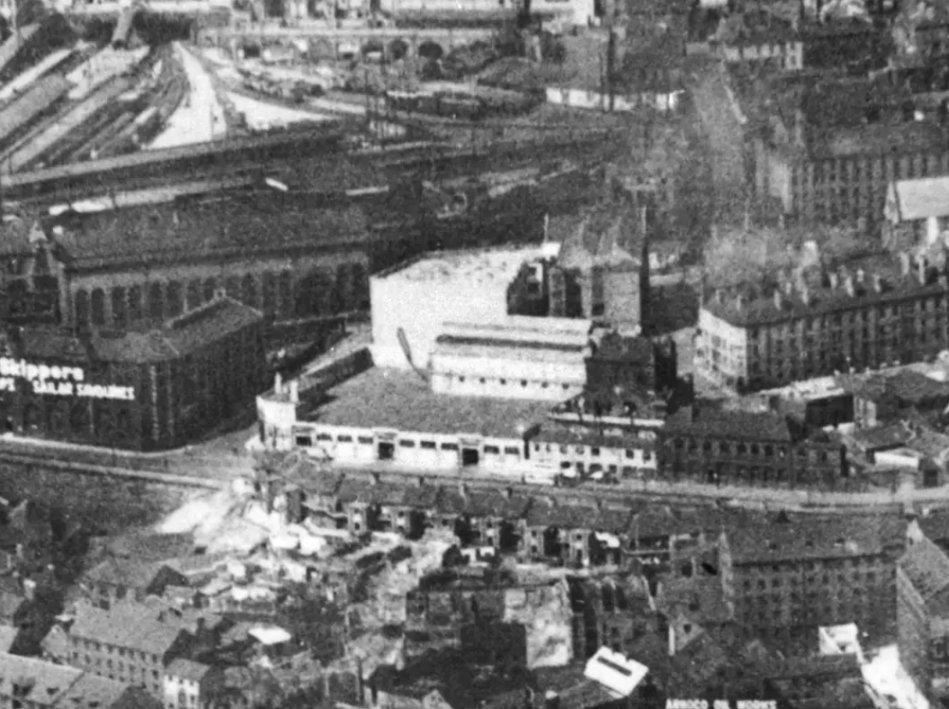
Newcastle
Pandon House (Home for Destitute Boys)
Last Updated:
5 Jun 2025
Newcastle
This is a
Dwelling, Care Home
54.972636, -1.603740
Founded in
Current status is
Redeveloped
Designer (if known):

Now student housing
Incredibly, despite the full clearance of buildings here, Pandon Bank retains a certain similarity and it's easy to pick out where this large villa house stood. This was the site of the Home for Destitute Boys in the 19th century, but was previously Pandon House - home of sailmaker William Proctor and later George T Gibson - a respected Wesleyan Methodist and owner of Spital Tongues Colliery.
The Home for Destitute Boys was a refuge for children who suffered from the greatest levels of poverty and suffering, including orphans. There was very little state support, and often the responsibility for these young children fell on those who were kind enough to help. They moved in to this site by the late 1850s, primarily through the support of the Newcastle Shoeblack Brigade. You could sort of argue they were the social services of their day, helping kids who were begging and hungry on the streets by giving them a roof over their head and finding them a job (predominantly shoe shining/shoeblacking). It was hoped this would change the direction of their lives to become "creditable citizens".
Up to 50 boys aged 13-17 were housed here until 1921 - most from the workhouse, the "Cripples home", their parents "wretched homes" or orphanages. They were fed, supported and clothed by philanthropic contributions from the public, fundraised through dinners and general goodwill. Many of the kids went on to serve in the army and navy, and dinners were held for the old boys to testify their success.
Unfortunately, the house was wrecked just after WWI by a group of young men, and the residents were moved to another home on Westmorland Road. It was finally finished off by an arson attack in 1926, when it was in use as a printers. From there it was quickly redeveloped into more functional industrial buildings. Hmmm!
Listing Description (if available)


Both these Ordnance Survey maps illustrate Pandon House and its wider environs from the 1850s til the 1890s. The earlier map depicts a Pandon forming as we understand it. Melbourne Street is under construction alongside the bottom end of Argyle Street, which perhaps claimed some of Pandon House's estate. It's interesting to see those swells on the left hand side of Argyle Street, and I wonder if they were passing points for carts from Sandgate. In the late 18th and early 19th century this whole area was gardens and allotments.
We see the street plan fully realised in the 1890s featuring a malthouse, churches and various pubs. With a decade, the plot on Melbourne Street would become the Manors Power Station as well other large warehouse units and printworks.

Over the course of the next 50 years, Pandon continued to transition into a hub of warehouses and printing works. Pandon House had been razed and redeveloped, while the Manors Power Station supplemented the Corporation's supply on the Tyne Bridge and the like. The Manors Granary had all but closed, and in 30 years time one of these printworks would become the fabled Riverside music venue.

Site of Pandon House in April 2025

Pandon Bank in 1897, with the Home for Destitute Boys on the right. Source: Newcastle Libraries

Pandon Bank and the new printworks after the mystery fire. Source: © Historic England. Aerofilms Collection EPW048803 flown August 1935
